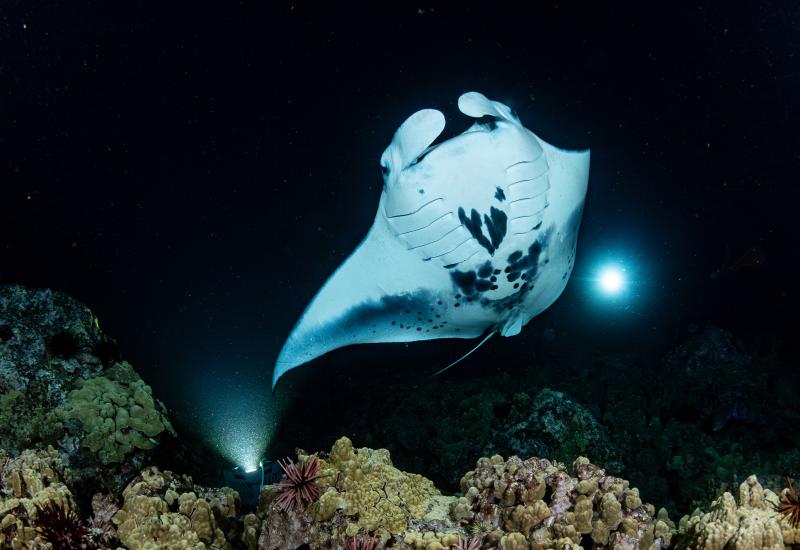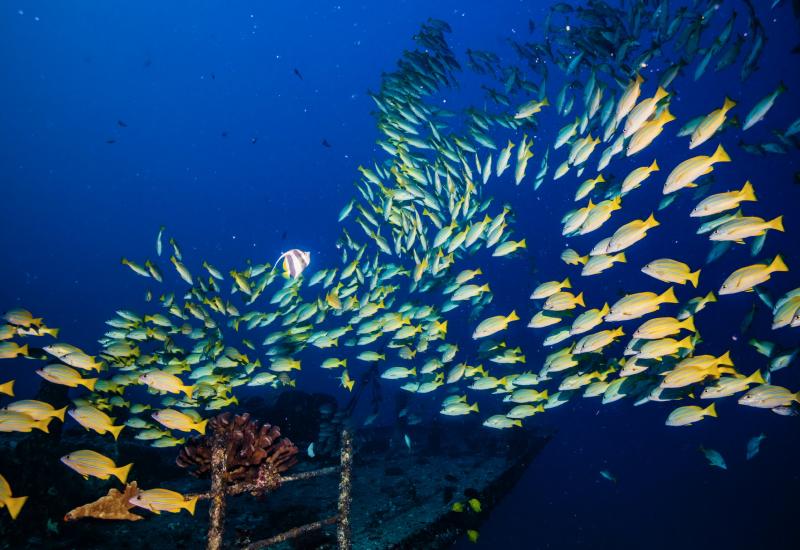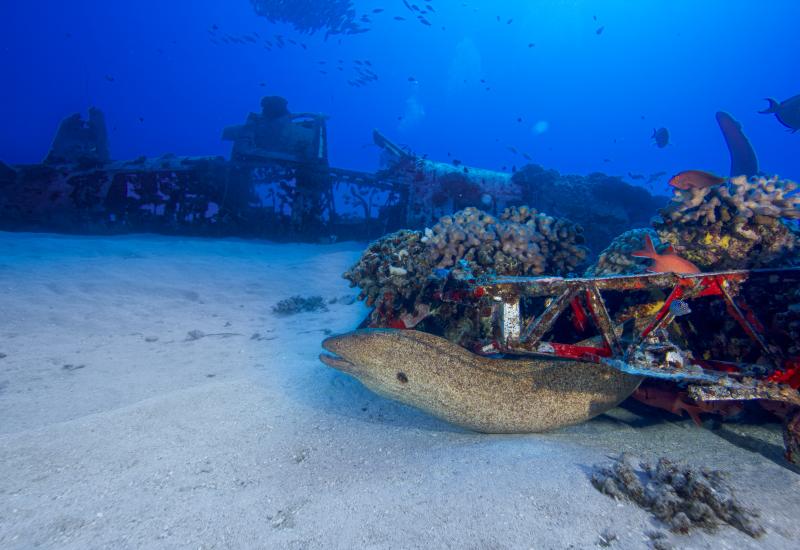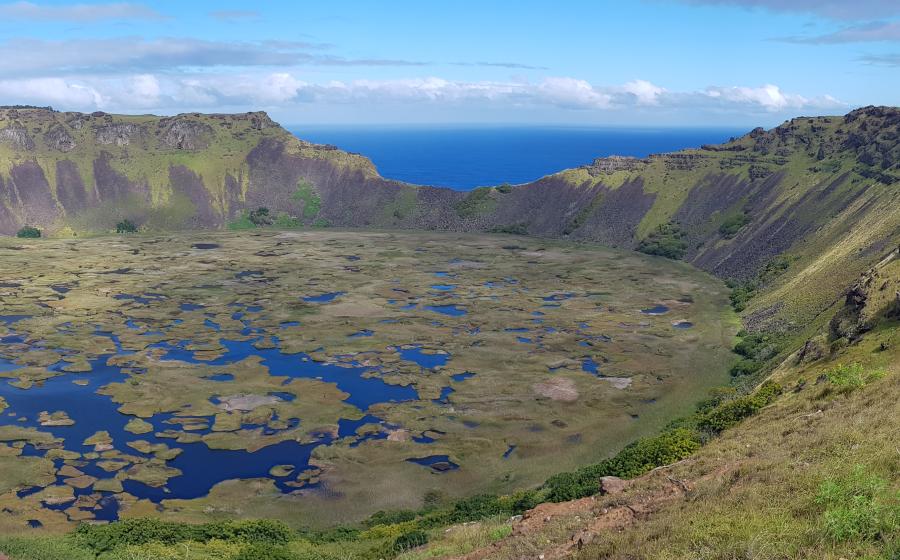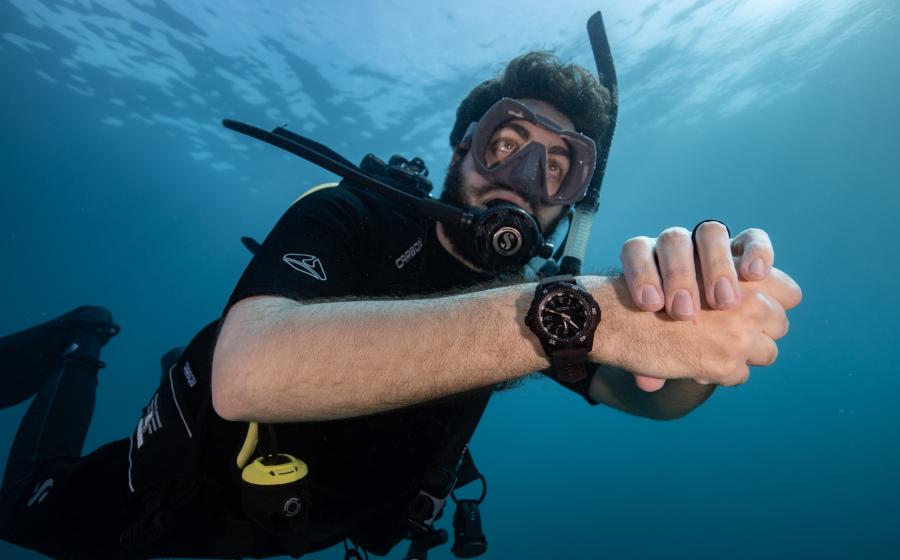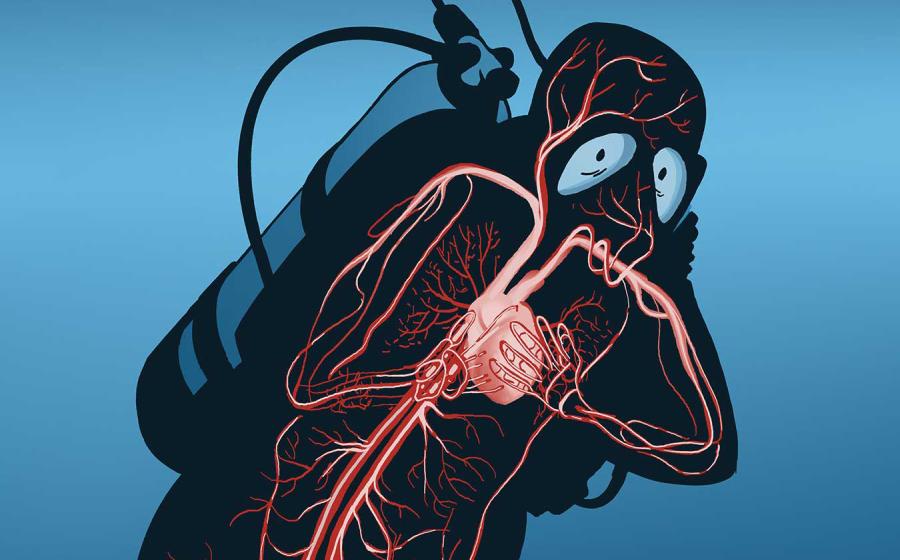Thailand Travel Information
Geography
Thailand is bathed by the waters of two oceans. To the east is Gulf of Thailand, and to the west is the Andaman Sea. Diving happens off both coasts, but the best combination of clear water and impressive coral reefs occurs in the Andaman Sea. This includes territorial waters of Thailand, and also into Myanmar (formerly Burma). Specifically the Mergui Archipelago and Burma Banks are politically Myanmar possessions; however it is merely a geographic continuation of the reef structure and islands dotting the eastern Andaman Sea.
Thailand itself is located in the tropical Northern Hemisphere and stretches more than 1,100 miles from north to south. Shaped kind of like an elephant's head, with a long southern peninsula forming the "trunk". Neighboring countries include Cambodia to the southeast, Malaysia to the south and Myanmar to the northeast.
Location
Phuket is situated roughly halfway between Bangkok, the capital city of Thailand, and Singapore. Thai Airways International, Singapore Airlines and Malaysian Airlines all offer convenient flights to Phuket from the USA and Europe.
You can connect to Phuket from Bangkok (multiple flights each day), Singapore, Kuala Lumpur, Frankfurt, or Hong Kong.
Climate
There are essentially 3 seasons in Thailand:
1. Dry. Begins in November and runs through March, characterized by sunny skies, balmy breezes, and moderate temperatures. There may be evening showers but overall this is the driest time of the year, and best for dive cruising.
2. Hot. Mid-March through April brings warmer and more humid conditions, with typically calm seas. Also a very good time for cruising.
3. Rainy. April through October brings the southwest monsoon winds and moist air from the Indian Ocean. It can rain for several days at a time, although conversely the weather can be beautiful as well. This is the soft season for tourism in Thailand.
Water Temperature
The Andaman Sea temperatures range from 79 to 84 degrees, with occasional thermoclines at depth. Given the multiple dives we do each day, most will be comfortable in a 3mm or 3/5mm wetsuit for charters booked during the preferred "dry" season. A hooded vest is a nice idea for those who are comfortable layering their thermal protection. It was about 80 - 82 degrees during our time in Thailand.
Visa
Thailand does not require a visa for tourists staying short periods. On arrival at immigration your passport will be stamped for entry permitted up to 30 days.
Currency
The local currency is the Baht. The exchange rate is currently about; 1 USD = 38 Baht (THB), but due to the strong currency fluctuations occurring in Southeast Asia this can change quickly. Hotel restaurants and shops accept all the major credit cards. There is a Port and Park fee of $150 in US dollars. Thai banks do not accept "third party" traveler's checks, and therefore TC are only useful at an exchange booth or directly at the bank.
Timezone
Local time is 7 hours ahead of UTC (GMT) throughout the country all year round. Thailand has no daylight savings period. Apart from daylight savings time, it is exactly 12 hours different than EST, making for maximum jet lag no doubt.
Electricity
In Thailand 220 Volts, 50 Hz is standard. On board Ocean Rover we had 220V / 50Hz and 110V / 60Hz available. The 110V is only available in the camera charging areas. Guest cabins are 220V. The electrical plug is a two-pronged circular plug, but most receptacles are designed to accept the US style plugs as well. Those with smart chargers may not even need adapters.
Health
Health services in Thailand are excellent with modern equipped hospitals in all major towns. Most of the country is free of malaria, cholera and other serious diseases. However, it is always prudent to check if your vaccinations are still up to date. Normal precautions with food will keep you out of trouble. Be sure to drink only bottled water, except on the boat of course where the water is desalinated and safe to drink. There are several recompression facilities both in Phuket and Bangkok, including a modern acrylic monoplace chamber at the Bangkok Phuket Hospital operated by the Badalveda Diving Medicine Centers. Diving medicine here is taken very seriously, and is delivered with professionalism and courtesy.
Malaria considerations - According to the Centers for Disease Control, http://www.cdc.gov/travel/regionalmalaria/seasia.htm, "Most travelers to Thailand are not at risk for malaria and do not need to take an antimalarial drug. Travelers to the border areas of Cambodia, Laos, and Burma should take an antimalarial drug. If travel is to the Thailand/Burma border or the Thailand/Cambodia border, then either atovaquone/proguanil, doxycycline (or primaquine in special circumstances) should be used. Mefloquine would not be recommended in these border areas."
Language
Thai is the official language but nearly all Thais that work in the tourism industry speak English. Make sure you speak slowly and clearly without too many colloquialisms and people will understand you just fine. Thais believe that the least we can do for our fellow man is to smile and be polite. If you maintain the same attitude during your stay in Thailand, you'll have a wonderful time.
Dress Code
In all the tourist resorts shorts and T-shirts are acceptable attire. At night as well, although "smart-casual" is preferred in the better eating-places. Jackets and ties are not required anywhere. Ladies are expected to dress appropriately when visiting temples, and this includes long pants.
Government
Thailand is a constitutional monarchy led by King Bhumibol Adulyadej. The Royal Family has earned the respect of the nation and is held in high esteem. Visitors to the country are expected to treat the Royal Family with respect.
Religion
Nearly all Thais are Buddhists. A small percentage is Muslim (mainly in the south) and some are Christians, Hindus or Confucians. Tolerance towards religion is symbolized by the fact that the King is the Protector of All Faiths.
Temperature
Thailand's tropical climate is influenced by the southwest and northeast monsoons. There are three seasons: Dry (November through Feb), Hot (March through May) and Rainy (June through October). Diving is possible all year round, but there are about ten days each year when monsoon winds are too strong for safe recreational diving.
Water temperature in the Andaman Sea averages around 27C (about 80F). Very pleasant although sometimes thermoclines occur. The type of wetsuit you need depends on how easily you feel the cold and how many dives per day you make. A thin shorty or skin may be enough for a daytrip but on a live-aboard cruise you are better off with a 3 to 5mm full wetsuit. The Gulf of Thailand has similar water temperatures. Air temperature: 20-35 C, always warm, can be very hot and humid, nights often cooler.
January: Sunny, windy, clear water, pleasant temperatures.
February: Same as January, but getting warmer.
Dive & Travel Insurance
Highly recommended, and in fact live-aboards such as the Ocean Rover makes DAN or equivalent insurance mandatory due to the remoteness of some areas of operation and the possibility a very expensive air-evacuation may be required.
The Diving
The Similan Islands National Park is the centerpiece of all live-aboard trips in Phuket. Nowhere is the diving more varied or colorful than here. There are nine, densely wooded islands lying north to south. Each has its own name but everyone knows them simply by number. Most islands have gorgeous beaches with fine talcum powder-like sand.
The underwater scenery changes as you alternate between the east and the west side of the islands. On the east side, the diving is on sloping hard coral reefs and shallow coral gardens. Here, photographers can happily lose themselves for hours on end. Change over to the west side and it is as if you are at a totally different location. Here, huge granite boulders stacked on top of one another create caverns and swim-throughs. Soft corals cover everything, huge gorgonian sea fans and bright yellow cup corals add to the orgy of color.
Plus of course fish, fish, and more fish. Few places on earth offer as much variety and enjoyment as the Similan Islands. All the reef fish are happy to pose for your camera. Ask the dive master to show you the hideouts of some of the rarer species such as ghost pipefish, blue spotted jawfish, Andaman sweet lips, ribbon eels and nudibranchs. If you are a marine biology buff, this is the place to visit!
Some of the Similan Islands' best loved dive sites are: Elephant Head, Fantasea Reef, Morning Glory, Christmas Point, The Hide-Away and East of Eden. Though each of these locations has its own characteristics, they all share the underwater panorama that is uniquely Similan. Many divers return to the Similan Islands year after year and all agree the islands never fail to impress them.
SURIN ISLANDS and RICHELIEU ROCK
Distance from Phuket: 110 NM
Distance from Similans: 50 NM
Diving Depth: 3-40 m. (10-130 ft.)
Visibility: fair to good
Diver Level: experienced divers
The Surin Islands Marine National Park lies just a few miles south of Burmese border. The five islands are closely grouped together; the main islands larger than any of the Similans and covered in verdant rainforest. A small Sea Gypsy community lives on the east coast. The diving here is mainly on fringing hard coral reefs, similar to the east side of the Similans. Two of our favorite dive sites are Ko Torinla and Turtle Ledges. Besides hawksbill turtles one can also observe juvenile tallfin batfish and a wide variety of colorful reef fishes.
Richelieu Rock lies 9 Nautical Miles east of Surin Islands. This world-class dive site is by far the best in the Surin area and justifiably known as the place to see whalesharks. We encounter more of them here than at any other location. Swimming alongside these huge fish is any diver's dream come true. Even our dive crew, which sees plenty of big fish action, is thrilled each time we come across these gentle giants of the ocean. Unfortunately numbers have been down during the last three seasons. But Richelieu Rock has more to offer than whalesharks and mantas. This rocky outcrop is covered in soft corals and seems to act like a magnet when it comes to attracting fish. We've seen every imaginable variety of fish here including the shy and, elsewhere rarely seen, shovelnose ray or guitarfish. You can spend hours observing the mating rituals of cuttlefish or photograph mantis-shrimps playing hide and seek. Watch schools of chevron barracuda and big eye jacks cruise by while thousands of colorful fusiliers swirl around the rocks. This is truly a special place.
Halfway between Similan islands and Surin islands are two islands: Ko Tachai to the west and Ko Bon to the east. Both islands are also good places for encountering large pelagics.
KO TACHAI's southeast tip is a dive site called twin peaks, two submerged pinnacles connected by a long reef. A resident school of tallfin batfish and chevron barracuda circle this site which is also a favorite with leopard sharks. Strong currents make this a good place for observing bluefin and giant trevallies as well.
KO BON's west side is a steep rock face that drops to 40 meters. At the bottom, we often find leopard sharks and blue spotted stingrays. Ko Bon is also one of the best sites to encounter manta rays.
MYANMAR (BURMA)
MERGUI ARCHIPELAGO
The Mergui Archipelago consists of over a hundred islands and reefs. Ocean Rover permission to operate in this area was granted in 1997. The gateway to the archipelago is Kawthoung (Victoria Point) on the south tip of Myanmar, a 30 minute boat trip from the Thai port of Ranong.
So far, our explorations have shown that the area closest to Myanmar's shore is very scenic but has no decent diving. The middle area is more interesting. Visibility is only fair, but there is plenty of fascinating marine life. Different species of sharks and stingrays as well as a good assortment of small and semi-rare creatures such as ghost pipefish and tiger tail seahorses can be spotted here. The reefs are mainly rocky with hard corals although some areas have sponges, fans and soft corals as well.
The westernmost region of the Mergui Archipelago is where the water gets deeper and clearer. This is where the sharks roam. Leopard sharks, grey reefs, white tips and sometimes spinner sharks -a wonderful variety. The underwater scenery is somewhat like a cross between the Similans and the Burma Banks. Nice big schools of jacks swirl around the rocks, stingrays rest on the seafloor nearby huge sea fans. Our favorite dive sites (so far) in the Mergui Archipelago are Western Rocky Island, Black Rock, High Rock and Three Islets.
"Unique" is the best way to describe the Mergui Archipelago. Here you have the one thing Thailand's islands lack: good anchorage. There are hundreds of deserted coves and bays fringed with white sandy beaches. There is a bay for every boat, in any weather. The islands are covered with rain forest and mostly uninhabited. We have spotted wild boar and even heard reports of salt-water crocodiles. Very few foreigners have been here in the last 50 years.
WESTERN ROCKY
Distance from Phuket: 150 NM
Distance Victoria Point: 40 NM
Diving Depth: 6-35m. (20-120ft)
Visibility: fair to good
Diver Level: experienced divers
There is no dive site quite like Western Rocky in either Thailand or Myanmar. Situated in open sea, the island has a long sloping reef on the northeast side. The other sides offer wall diving. The sand bottom starts at 30 to 35 meters and is dotted with boulders and coral heads that are covered with large fans and colorful soft corals.
Just east of the islands four small pinnacles and two large ones break the surface, while a number of submerged pinnacles are found off the south side. Western Rocky's unique features are a large tunnel that runs right through the middle of the island and a large submerged arch carved out of the limestone. With luck you get to see plenty of sharks and good schooling fish action around Western Rocky but we like it best for its fabulous macro life. You can expect many species of nudibranchs, cuttlefish, squid, porcelain crabs, moray eels, cowries and murex shells. We even often find rarities like harlequin shrimp, orangutan spider crabs and frogfish here. All in all a true world-class dive site!
THREE ISLETS
Distance from Phuket: 170 NM
Distance from Victoria Point: 53 NM
Diving Depth: 0-27m (0-90 ft)
Visibility: fair to good
Diver level: experienced divers
Three Islets consists of one small and two large rocks, all of which rise above the surface. Each could be considered a separate site; there is no way to see them all on a single dive, or even a full day of diving. All three are perfectly suited for multilevel profiles, with thriving marine life from the bottom to the surface.
Underwater, the combination of unusual topography and a tremendous variety of creatures makes this one of the best dive sites in the Mergui Archipelago. Nearly every square meter is riddled with crevices that provide shelter and holdfasts for an enormous volume of fish and invertebrate life. Long snout pipe fishes, tiger tail seahorses, cuttlefish, squid, octopi, banded sea kraits, orangutan spider crabs, nudibranchs, different moray eels, several species of shrimps and many other creatures are commonly found here.
Aside from the marine life, another outstanding feature is a large canyon on the north end of the middle islet where with luck you can encounter semi-resident grey reef sharks. Past the canyon on the right you will find an opening to a tunnel that runs completely through the island and exits on the east side at about 15m. Close to the entrance of the tunnel is an area covered with bright yellow sponges and often large schools of juvenile fish.
BLACK ROCK
Distance from Phuket: 220 NM
Distance from Victoria Point: 90 NM
Diving Depth: 6-45m (20-150ft)
Visibility: fair to excellent
Diver level: experienced divers
The bare rocky outcrop of Black Rock may not be so spectacular above the surface but is underwater truly a divers paradise with marine life studded from just below the waterline to way down deep. It is another superb site with a tremendous amount of macro life including a large variety of nudibranchs, crabs and shrimps, spindle cowries, filament wrasse and moray eels.
We often encounter big schools of snapper, jacks and barracudas here swirling just off the reef. Leopard sharks, marble rays, wahoo, white tip reef sharks, spotted eagle rays and even manta rays are frequently cruising along the reef as well.
BURMA BANKS
Distance from Phuket: 130 NM
Distance from Victoria Point: 90 NM
Diving Depth: 15-35m (45-120 ft)
Visibility: good to crystal clear
Diver level: experienced divers
The Burma Banks are a series of completely submerged seamounts. The shallowest Bank tops out at 15 meters from the surface and the surrounding ocean floor is over 400 meters deep. The Banks do not offer much in the form of pretty coral reefs but are one of our best shark dives thanks to a small population of silvertip and tawny nurse sharks. Diving here is exciting to say the least.
Fantasea Divers first explored this area in 1990 and we continued diving there until 1995 when the Burmese authorities informed us we were no longer welcome. The Burma Banks are well offshore in international waters, but they are still within the 200-mile Myanmar Exclusive Economic Zone. As the Burmese considered our activities there of a commercial nature they felt we should not dive there without their official permission. In 1997 we finally received this permission and we can now visit the Burma Banks during any Ocean Rover cruise that includes Myanmar.
Geography
Thailand is bathed by the waters of two oceans. To the east is Gulf of Thailand, and to the west is the Andaman Sea. Diving happens off both coasts, but the best combination of clear water and impressive coral reefs occurs in the Andaman Sea. This includes territorial waters of Thailand, and also into Myanmar (formerly Burma). Specifically the Mergui Archipelago and Burma Banks are politically Myanmar possessions; however it is merely a geographic continuation of the reef structure and islands dotting the eastern Andaman Sea.
Thailand itself is located in the tropical Northern Hemisphere and stretches more than 1,100 miles from north to south. Shaped kind of like an elephant's head, with a long southern peninsula forming the "trunk". Neighboring countries include Cambodia to the southeast, Malaysia to the south and Myanmar to the northeast.
Location
Phuket is situated roughly halfway between Bangkok, the capital city of Thailand, and Singapore. Thai Airways International, Singapore Airlines and Malaysian Airlines all offer convenient flights to Phuket from the USA and Europe.
You can connect to Phuket from Bangkok (multiple flights each day), Singapore, Kuala Lumpur, Frankfurt, or Hong Kong.
Climate
There are essentially 3 seasons in Thailand:
1. Dry. Begins in November and runs through March, characterized by sunny skies, balmy breezes, and moderate temperatures. There may be evening showers but overall this is the driest time of the year, and best for dive cruising.
2. Hot. Mid-March through April brings warmer and more humid conditions, with typically calm seas. Also a very good time for cruising.
3. Rainy. April through October brings the southwest monsoon winds and moist air from the Indian Ocean. It can rain for several days at a time, although conversely the weather can be beautiful as well. This is the soft season for tourism in Thailand.
Water Temperature
The Andaman Sea temperatures range from 79 to 84 degrees, with occasional thermoclines at depth. Given the multiple dives we do each day, most will be comfortable in a 3mm or 3/5mm wetsuit for charters booked during the preferred "dry" season. A hooded vest is a nice idea for those who are comfortable layering their thermal protection. It was about 80 - 82 degrees during our time in Thailand.
Visa
Thailand does not require a visa for tourists staying short periods. On arrival at immigration your passport will be stamped for entry permitted up to 30 days.
Currency
The local currency is the Baht. The exchange rate is currently about; 1 USD = 38 Baht (THB), but due to the strong currency fluctuations occurring in Southeast Asia this can change quickly. Hotel restaurants and shops accept all the major credit cards. There is a Port and Park fee of $150 in US dollars. Thai banks do not accept "third party" traveler's checks, and therefore TC are only useful at an exchange booth or directly at the bank.
Timezone
Local time is 7 hours ahead of UTC (GMT) throughout the country all year round. Thailand has no daylight savings period. Apart from daylight savings time, it is exactly 12 hours different than EST, making for maximum jet lag no doubt.
Electricity
In Thailand 220 Volts, 50 Hz is standard. On board Ocean Rover we had 220V / 50Hz and 110V / 60Hz available. The 110V is only available in the camera charging areas. Guest cabins are 220V. The electrical plug is a two-pronged circular plug, but most receptacles are designed to accept the US style plugs as well. Those with smart chargers may not even need adapters.
Health
Health services in Thailand are excellent with modern equipped hospitals in all major towns. Most of the country is free of malaria, cholera and other serious diseases. However, it is always prudent to check if your vaccinations are still up to date. Normal precautions with food will keep you out of trouble. Be sure to drink only bottled water, except on the boat of course where the water is desalinated and safe to drink. There are several recompression facilities both in Phuket and Bangkok, including a modern acrylic monoplace chamber at the Bangkok Phuket Hospital operated by the Badalveda Diving Medicine Centers. Diving medicine here is taken very seriously, and is delivered with professionalism and courtesy.
Malaria considerations - According to the Centers for Disease Control, http://www.cdc.gov/travel/regionalmalaria/seasia.htm, "Most travelers to Thailand are not at risk for malaria and do not need to take an antimalarial drug. Travelers to the border areas of Cambodia, Laos, and Burma should take an antimalarial drug. If travel is to the Thailand/Burma border or the Thailand/Cambodia border, then either atovaquone/proguanil, doxycycline (or primaquine in special circumstances) should be used. Mefloquine would not be recommended in these border areas."
Language
Thai is the official language but nearly all Thais that work in the tourism industry speak English. Make sure you speak slowly and clearly without too many colloquialisms and people will understand you just fine. Thais believe that the least we can do for our fellow man is to smile and be polite. If you maintain the same attitude during your stay in Thailand, you'll have a wonderful time.
Dress Code
In all the tourist resorts shorts and T-shirts are acceptable attire. At night as well, although "smart-casual" is preferred in the better eating-places. Jackets and ties are not required anywhere. Ladies are expected to dress appropriately when visiting temples, and this includes long pants.
Government
Thailand is a constitutional monarchy led by King Bhumibol Adulyadej. The Royal Family has earned the respect of the nation and is held in high esteem. Visitors to the country are expected to treat the Royal Family with respect.
Religion
Nearly all Thais are Buddhists. A small percentage is Muslim (mainly in the south) and some are Christians, Hindus or Confucians. Tolerance towards religion is symbolized by the fact that the King is the Protector of All Faiths.
Temperature
Thailand's tropical climate is influenced by the southwest and northeast monsoons. There are three seasons: Dry (November through Feb), Hot (March through May) and Rainy (June through October). Diving is possible all year round, but there are about ten days each year when monsoon winds are too strong for safe recreational diving.
Water temperature in the Andaman Sea averages around 27C (about 80F). Very pleasant although sometimes thermoclines occur. The type of wetsuit you need depends on how easily you feel the cold and how many dives per day you make. A thin shorty or skin may be enough for a daytrip but on a live-aboard cruise you are better off with a 3 to 5mm full wetsuit. The Gulf of Thailand has similar water temperatures. Air temperature: 20-35 C, always warm, can be very hot and humid, nights often cooler.
January: Sunny, windy, clear water, pleasant temperatures.
February: Same as January, but getting warmer.
Dive & Travel Insurance
Highly recommended, and in fact live-aboards such as the Ocean Rover makes DAN or equivalent insurance mandatory due to the remoteness of some areas of operation and the possibility a very expensive air-evacuation may be required.
The Diving
The Similan Islands National Park is the centerpiece of all live-aboard trips in Phuket. Nowhere is the diving more varied or colorful than here. There are nine, densely wooded islands lying north to south. Each has its own name but everyone knows them simply by number. Most islands have gorgeous beaches with fine talcum powder-like sand.
The underwater scenery changes as you alternate between the east and the west side of the islands. On the east side, the diving is on sloping hard coral reefs and shallow coral gardens. Here, photographers can happily lose themselves for hours on end. Change over to the west side and it is as if you are at a totally different location. Here, huge granite boulders stacked on top of one another create caverns and swim-throughs. Soft corals cover everything, huge gorgonian sea fans and bright yellow cup corals add to the orgy of color.
Plus of course fish, fish, and more fish. Few places on earth offer as much variety and enjoyment as the Similan Islands. All the reef fish are happy to pose for your camera. Ask the dive master to show you the hideouts of some of the rarer species such as ghost pipefish, blue spotted jawfish, Andaman sweet lips, ribbon eels and nudibranchs. If you are a marine biology buff, this is the place to visit!
Some of the Similan Islands' best loved dive sites are: Elephant Head, Fantasea Reef, Morning Glory, Christmas Point, The Hide-Away and East of Eden. Though each of these locations has its own characteristics, they all share the underwater panorama that is uniquely Similan. Many divers return to the Similan Islands year after year and all agree the islands never fail to impress them.
SURIN ISLANDS and RICHELIEU ROCK
Distance from Phuket: 110 NM
Distance from Similans: 50 NM
Diving Depth: 3-40 m. (10-130 ft.)
Visibility: fair to good
Diver Level: experienced divers
The Surin Islands Marine National Park lies just a few miles south of Burmese border. The five islands are closely grouped together; the main islands larger than any of the Similans and covered in verdant rainforest. A small Sea Gypsy community lives on the east coast. The diving here is mainly on fringing hard coral reefs, similar to the east side of the Similans. Two of our favorite dive sites are Ko Torinla and Turtle Ledges. Besides hawksbill turtles one can also observe juvenile tallfin batfish and a wide variety of colorful reef fishes.
Richelieu Rock lies 9 Nautical Miles east of Surin Islands. This world-class dive site is by far the best in the Surin area and justifiably known as the place to see whalesharks. We encounter more of them here than at any other location. Swimming alongside these huge fish is any diver's dream come true. Even our dive crew, which sees plenty of big fish action, is thrilled each time we come across these gentle giants of the ocean. Unfortunately numbers have been down during the last three seasons. But Richelieu Rock has more to offer than whalesharks and mantas. This rocky outcrop is covered in soft corals and seems to act like a magnet when it comes to attracting fish. We've seen every imaginable variety of fish here including the shy and, elsewhere rarely seen, shovelnose ray or guitarfish. You can spend hours observing the mating rituals of cuttlefish or photograph mantis-shrimps playing hide and seek. Watch schools of chevron barracuda and big eye jacks cruise by while thousands of colorful fusiliers swirl around the rocks. This is truly a special place.
Halfway between Similan islands and Surin islands are two islands: Ko Tachai to the west and Ko Bon to the east. Both islands are also good places for encountering large pelagics.
KO TACHAI's southeast tip is a dive site called twin peaks, two submerged pinnacles connected by a long reef. A resident school of tallfin batfish and chevron barracuda circle this site which is also a favorite with leopard sharks. Strong currents make this a good place for observing bluefin and giant trevallies as well.
KO BON's west side is a steep rock face that drops to 40 meters. At the bottom, we often find leopard sharks and blue spotted stingrays. Ko Bon is also one of the best sites to encounter manta rays.
MYANMAR (BURMA)
MERGUI ARCHIPELAGO
The Mergui Archipelago consists of over a hundred islands and reefs. Ocean Rover permission to operate in this area was granted in 1997. The gateway to the archipelago is Kawthoung (Victoria Point) on the south tip of Myanmar, a 30 minute boat trip from the Thai port of Ranong.
So far, our explorations have shown that the area closest to Myanmar's shore is very scenic but has no decent diving. The middle area is more interesting. Visibility is only fair, but there is plenty of fascinating marine life. Different species of sharks and stingrays as well as a good assortment of small and semi-rare creatures such as ghost pipefish and tiger tail seahorses can be spotted here. The reefs are mainly rocky with hard corals although some areas have sponges, fans and soft corals as well.
The westernmost region of the Mergui Archipelago is where the water gets deeper and clearer. This is where the sharks roam. Leopard sharks, grey reefs, white tips and sometimes spinner sharks -a wonderful variety. The underwater scenery is somewhat like a cross between the Similans and the Burma Banks. Nice big schools of jacks swirl around the rocks, stingrays rest on the seafloor nearby huge sea fans. Our favorite dive sites (so far) in the Mergui Archipelago are Western Rocky Island, Black Rock, High Rock and Three Islets.
"Unique" is the best way to describe the Mergui Archipelago. Here you have the one thing Thailand's islands lack: good anchorage. There are hundreds of deserted coves and bays fringed with white sandy beaches. There is a bay for every boat, in any weather. The islands are covered with rain forest and mostly uninhabited. We have spotted wild boar and even heard reports of salt-water crocodiles. Very few foreigners have been here in the last 50 years.
WESTERN ROCKY
Distance from Phuket: 150 NM
Distance Victoria Point: 40 NM
Diving Depth: 6-35m. (20-120ft)
Visibility: fair to good
Diver Level: experienced divers
There is no dive site quite like Western Rocky in either Thailand or Myanmar. Situated in open sea, the island has a long sloping reef on the northeast side. The other sides offer wall diving. The sand bottom starts at 30 to 35 meters and is dotted with boulders and coral heads that are covered with large fans and colorful soft corals.
Just east of the islands four small pinnacles and two large ones break the surface, while a number of submerged pinnacles are found off the south side. Western Rocky's unique features are a large tunnel that runs right through the middle of the island and a large submerged arch carved out of the limestone. With luck you get to see plenty of sharks and good schooling fish action around Western Rocky but we like it best for its fabulous macro life. You can expect many species of nudibranchs, cuttlefish, squid, porcelain crabs, moray eels, cowries and murex shells. We even often find rarities like harlequin shrimp, orangutan spider crabs and frogfish here. All in all a true world-class dive site!
THREE ISLETS
Distance from Phuket: 170 NM
Distance from Victoria Point: 53 NM
Diving Depth: 0-27m (0-90 ft)
Visibility: fair to good
Diver level: experienced divers
Three Islets consists of one small and two large rocks, all of which rise above the surface. Each could be considered a separate site; there is no way to see them all on a single dive, or even a full day of diving. All three are perfectly suited for multilevel profiles, with thriving marine life from the bottom to the surface.
Underwater, the combination of unusual topography and a tremendous variety of creatures makes this one of the best dive sites in the Mergui Archipelago. Nearly every square meter is riddled with crevices that provide shelter and holdfasts for an enormous volume of fish and invertebrate life. Long snout pipe fishes, tiger tail seahorses, cuttlefish, squid, octopi, banded sea kraits, orangutan spider crabs, nudibranchs, different moray eels, several species of shrimps and many other creatures are commonly found here.
Aside from the marine life, another outstanding feature is a large canyon on the north end of the middle islet where with luck you can encounter semi-resident grey reef sharks. Past the canyon on the right you will find an opening to a tunnel that runs completely through the island and exits on the east side at about 15m. Close to the entrance of the tunnel is an area covered with bright yellow sponges and often large schools of juvenile fish.
BLACK ROCK
Distance from Phuket: 220 NM
Distance from Victoria Point: 90 NM
Diving Depth: 6-45m (20-150ft)
Visibility: fair to excellent
Diver level: experienced divers
The bare rocky outcrop of Black Rock may not be so spectacular above the surface but is underwater truly a divers paradise with marine life studded from just below the waterline to way down deep. It is another superb site with a tremendous amount of macro life including a large variety of nudibranchs, crabs and shrimps, spindle cowries, filament wrasse and moray eels.
We often encounter big schools of snapper, jacks and barracudas here swirling just off the reef. Leopard sharks, marble rays, wahoo, white tip reef sharks, spotted eagle rays and even manta rays are frequently cruising along the reef as well.
BURMA BANKS
Distance from Phuket: 130 NM
Distance from Victoria Point: 90 NM
Diving Depth: 15-35m (45-120 ft)
Visibility: good to crystal clear
Diver level: experienced divers
The Burma Banks are a series of completely submerged seamounts. The shallowest Bank tops out at 15 meters from the surface and the surrounding ocean floor is over 400 meters deep. The Banks do not offer much in the form of pretty coral reefs but are one of our best shark dives thanks to a small population of silvertip and tawny nurse sharks. Diving here is exciting to say the least.
Fantasea Divers first explored this area in 1990 and we continued diving there until 1995 when the Burmese authorities informed us we were no longer welcome. The Burma Banks are well offshore in international waters, but they are still within the 200-mile Myanmar Exclusive Economic Zone. As the Burmese considered our activities there of a commercial nature they felt we should not dive there without their official permission. In 1997 we finally received this permission and we can now visit the Burma Banks during any Ocean Rover cruise that includes Myanmar.


